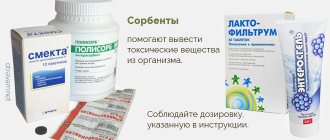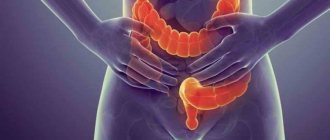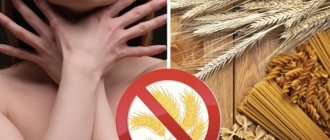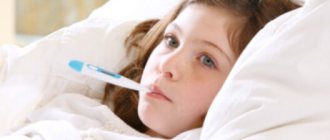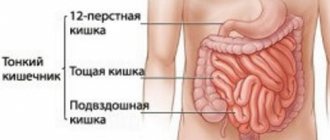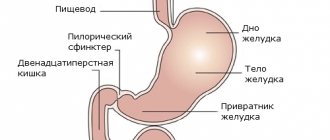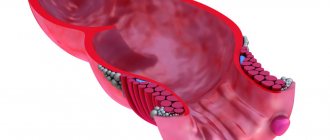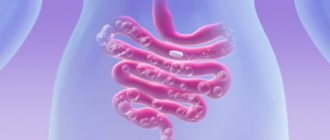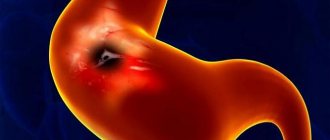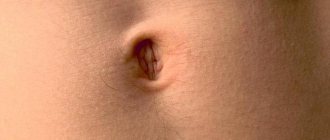Food poisoning is a disease the development of which is provoked not by the bacteria themselves, but by toxins that are formed as a result of pathogens living outside the human body. The causative agents of foodborne diseases are found in large quantities in food products that a person consumes daily. Many of them are able to withstand all food processing conditions, even if they are boiled for a few minutes.
- Etiology
- Classification
- Symptoms
- Diagnostics
- Treatment
- Prevention
A characteristic feature of the disease is the wave-like manifestation of the clinic, when a large number of people become infected over a short period of time. This is due to group consumption of the same product. In this case, the infection spreads to every person who consumed the contaminated product.
Foodborne toxic infection in children is characterized by symptoms of general intoxication of the body and acute gastritis, but people with weakened immune systems are at risk (children under two years of age, the elderly, people after surgery), and their disease is most severe.
Pathogens of food poisoning
The causative agents of PTI are representatives of opportunistic bacterial flora. Their number is in the dozens. Among the most common are known:
- Klebsiella;
- Proteus;
- coli;
- streptococcus;
- staphylococcus;
- enterobacteria;
- vibrios;
- clostridia;
- pseudomonas.
After undergoing IPT, immune reactions are weakly expressed, so it is inappropriate to talk about the formation of immunity. In addition, cross-immunity in the case of foodborne toxic infection is not formed, so cases of recurrent illness are possible due to toxins from another microbial agent entering the human body.
An important difference between PTI is that the clinical picture of the disease develops under the influence of a toxin (exo- or endo), and not the microbial agent itself. The microbial toxin can accumulate in contaminated food. The amount of toxic substance entering the human body determines the severity of the disease.
All pathogens of foodborne toxic infections are resistant to environmental factors (low and high temperatures, ultraviolet radiation, insolation, humidity), so it is inappropriate to talk about the destruction of these microbial agents.
Etiology
Food intoxication causes are caused by a number of bacteria that are capable of synthesizing enterotoxin:
These microorganisms are common in the environment; in the vast majority of cases they are part of the normal biocenosis of the human intestine.
The source of the pathogen is almost always a person who prepares food, and it can also be a sick or healthy animal that is a carrier of bacteria of various etiologies. Pathogens enter the environment through feces. Due to the fact that these types of bacteria are common, their source of origin often cannot be determined.
Toxic infection is transmitted through the food route using the fecal-oral mechanism. Pathogens of toxic infections end up in products, where they actively multiply and accumulate. And if a person happens to eat a product that contains a large number of microorganisms, then the disease will certainly begin to progress.
Transmission routes
The predominant route of transmission of foodborne pathogens is food (in accordance with the name). The water route of transmission is rarely confirmed, only in the case of mass infection of a large number of people, for example, when mixing tap water and sewage due to an accident.
Contact transmission is less significant than food transmission. However, if an outbreak of food poisoning develops in an organized group, insufficiently thorough cleaning of dishes and kitchen utensils can play a significant role in the spread of the disease.
Among food products that are potential factors for the transmission of foodborne illnesses, the greatest danger is represented by those that are not heat-treated before direct consumption. These include:
- confectionery products (pastries, cakes, mousses, creams);
- dairy products (whole milk, fermented baked milk, yogurt, kefir, yogurt);
- any salads (fruit and vegetable, especially dressed with mayonnaise);
- meat jelly, poorly fried meat, pate;
- eggs and any dishes made from them with insufficient heat treatment.
Toxins and other waste products of microorganisms can accumulate in food even at low temperatures, that is, storing food in the refrigerator does not prevent the development of the disease. In some cases, the color, smell and appearance of food are not affected by the microbial toxin, which increases the risk of developing the disease.
In the human body, as a result of the ingestion of a microbial toxin and the microorganism itself, inflammatory changes occur in the gastrointestinal tract and the development of general intoxication. Inflammatory changes in the digestive canal lead to impaired absorption and digestion of nutrients, resulting in diarrhea and other dyspeptic symptoms. Changes in other organ systems are functional in nature, that is, there is no disruption of tissue structure.
We recommend reading:
Klebsiella in the intestines: danger of bacteria, symptoms and treatment (drugs, diet)
Symptoms
Clinical manifestations of food poisoning are similar to many other diseases of infectious and non-infectious nature. Therefore, you should not engage in self-medication and self-diagnosis - only a specialist can distinguish PTI from acute appendicitis, which requires immediate surgical intervention.
The following manifestations indicate foodborne toxic infection:
- acute onset of the disease, literally half an hour to an hour after eating poor quality food;
- increased temperature (sometimes up to 39-40 ° C) combined with chills;
- sharp sudden weakness;
- repeated episodes of vomiting recently eaten food in combination with painful nausea;
- diffuse pain in the abdomen of a spastic nature - a person feels either constant pain or periodic spasms;
- loose stools without pathological impurities (mucus, streaks of blood, pus).
With food poisoning, everyone who has eaten poor quality food gets sick at the same time. This disease is characterized by mass distribution - members of the same family, children eating in the school canteen, and people who have visited a certain public catering establishment are affected.
Symptoms
Food poisoning has different symptoms, and at the initial stage the following appear:
- nausea, urge to vomit;
- diarrhea (about 10 times a day);
- low temperature;
- cramping pain in the abdomen.
At the next stage, the following symptoms appear:
- increased body temperature;
- chills;
- weakness of the body;
- headache.
During the examination, specialists note coldness in the extremities, tachycardia, pale skin, palpation in the navel area causes unpleasant or painful sensations. The disease resolves within 1-3 days.
Foodborne toxic infections have the following pathogenesis: enterotoxin comes into contact with the epithelium of the stomach and intestines, activation of these cells occurs, then cyclic adenosine monophosphate and guanidine monophosphate increase, and the synthesis of histamine and prostaglandins occurs. As a result, profuse vomiting and diarrhea develop, leading to hypovolemia and electrolyte imbalance. The effect of toxins stops after the intestinal epithelial cells are rejected.
The clinical picture has features depending on the pathogen that caused the foodborne illness:
- Klebsiella - febrile body temperature, fever, repeated vomiting, watery stool, a third of patients have an enlarged liver;
- Protea - diarrhea, vomiting, green stool;
- staphylococcal - the incubation period lasts 2-6 hours, there is nausea, constant vomiting, headache, pain in the upper abdomen;
- streptococcal – nausea, vomiting, sore throat (due to the development of catarrhal pharyngitis or tonsillitis);
- clostridial - girdling or acute pain in the navel area, stool with gas bubbles or blood impurities.
Complications are extremely rare, the following are noted:
- acute cardiovascular failure;
- sepsis;
- hypovolemic shock.
The severity of the clinical picture will depend on the general health of the patient.
Diagnostics
specialist treats foodborne illnesses If necessary, emergency care is provided by a family doctor or pediatrician. Treatment begins in a hospital and ends at home. In cases of moderate to mild food poisoning (and the possibility of careful patient care), treatment can occur at home. Diagnosis of PTI is based on clinical and epidemiological data. Due to the transience of the disease and the favorable outcome, microbiological diagnosis is rarely used, since it is not necessary.
We recommend reading:
Details about dysbiosis and methods of its treatment (diet, medications)
Laboratory confirmation of food poisoning is necessary in cases of epidemiological investigation or forensic examination. To do this, a pathogen is searched for in suspicious products and biological fluids of the patient (vomit, feces) using a bacteriological diagnostic method. Confirmation of the diagnosis is the identification of the same microbe in food and in the patient’s body.
Treatment and clinical recommendations
The prognosis of the disease in the vast majority of patients is favorable. Within 4-7 days the health condition is completely restored. For a doctor, treating food poisoning does not seem to be a difficult task.
An integrated approach to treatment is practiced, which includes medications, diet and protective regimen.
Urgent Care
Before the doctor arrives, the patient (or his relatives) can independently perform some actions that will alleviate the patient’s condition. These include:
- bed rest;
- refusal to eat;
- drink plenty of small portions (boiled water or still mineral water).
You cannot take antipyretics, painkillers, or antispasmodics without a doctor’s prescription. Taking medications complicates the process of making a preliminary diagnosis and, accordingly, adequate treatment of a particular patient.
Regime and diet
In the first 1-2 days from the onset of food poisoning, a complete refusal to eat and bed rest is required. As soon as the condition improves somewhat, expansion of the physical regime and dietary nutrition are allowed. For a damaged digestive canal, the following are useful:
- porridge with water (rice, buckwheat, semolina);
- pureed vegetable soups (not broth);
- fermented milk products with low fat content;
- boiled vegetables (potatoes or salad vinaigrette);
- crackers;
- weak tea with lemon, herbal infusions.
Dietary nutrition is gradually expanding: on days 3-4 you can eat lean meat, fish, etc.; after 7-8 days, the patient with PTI returns to his usual diet.
Drug treatment
Antibiotics are not indicated for IPT, since the main disorders in the body are caused by a microbial toxin. It is advisable to use intestinal antiseptics, which act only in the intestinal lumen and do not have a systemic effect.
We recommend reading:
Stool analysis for UPF: preparation, delivery and interpretation
To eliminate intoxication and other signs of the disease, the following are prescribed:
- intravenous drip infusions of saline and colloidal solutions;
- sorbents;
- enzymes to improve food digestion;
- vitamins.
The duration of drug therapy is determined by the treating doctor.
Disease prevention
Specific prevention of foodborne diseases has not been developed. Preventive measures require careful attention to food storage, preparation and compliance with sanitary and hygienic standards.
Read more: Measures to prevent intestinal infections
In continuation of the topic, be sure to read:
- Escherichiosis: details about the infectious disease
- Details about dysbiosis and methods of its treatment (diet, medications)
- Citrobacter in stool: should the infection be treated?
- How to take a stool test for intestinal microflora?
- Opportunistic microflora: what is it, the main representatives and their norms
- Escherichia coli: about the bacterium, its types, pathogenic and non-pathogenic strains
- Enterococci: about bacteria, normal and pathological existence
- Bacteriological culture (tank culture) of feces: essence, preparation and analysis
- Clostridia in a child’s stool: danger and treatment of pathology
- Klebsiella in the stool of a baby: symptoms, treatment and prognosis for the child
Video: what is it
Article rating:
( 1 ratings, average: 5.00 out of 5)
Share with friends:
You may also be interested in:
Cabbage poisoning: symptoms and causes, first aid and treatment
Solanine poisoning - symptoms and signs, what foods it contains
Poisoning without vomiting and diarrhea - can it happen in children and adults?
Sweet food poisoning - cakes, candies for children and adults
